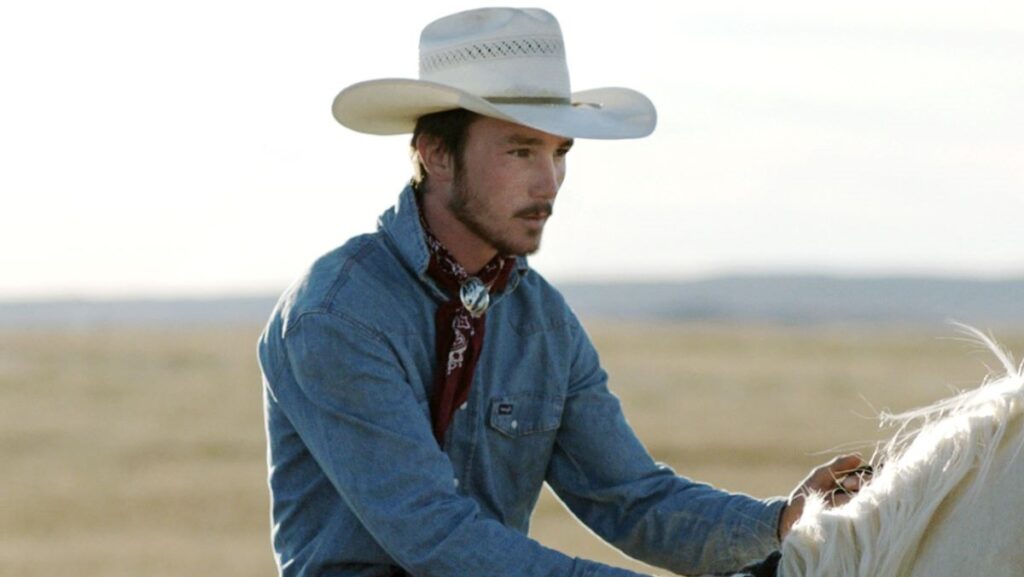The Western is a genre that has been reinvented time and time again. Many creatives have interpolated the classic American genre but no modern interpretation has yet reached the heights of Chloe Zhao’s The Rider. The young female filmmaker from Beijing crafts one of the best representations of modern Americana and masculinity in recent years.
Set in rural South Dakota, the film follows Brady, a rodeo cowboy who recently suffered a near-death experience in the ring. Based on the real-life experiences of its star, the film chronicles his relationships with friends, family, and his passions. Balancing the documentarian style with her own auteur vision, Zhao crafts a work that is staggeringly beautiful and poignant.
Zhao appears to have a special affinity for the Great Plains, with her first three feature films set on those wide open fields. As in many of her works, Zhao uses the setting to emphasize the subject’s isolation. The open spaces feel ripe for contemplative long takes, or exhilarating horse rides that can wipe anxiety from a character’s mind for a moment. Beautifully captured by Zhao’s cinematographer Joshua James Richards, each sunset or sunrise feels ethereal and weighty all at once.
In The Rider, Brady is adrift. Confronted with the grim realities that his chosen life path, a career in the rodeo that could take him away from his small-town beginnings, is too dangerous and could be taken away from him. But weighed against that danger is Brady’s notion that he has nothing to live for outside of the rodeo. He resents his father, feels alienated from his sister and her needs, and his friendships either ring hollow or remind him of the dangers inherent to rodeo.
Brady Jandreau stars as the character that shares his name. Jandreau has not appeared in a film since his 2017 debut with Zhao. While this is a shame for such a quietly enrapturing performer, it makes his role in The Rider all the more special. Jandreau wears every moment of elation and heartbreak with honesty, his regrets and insecurities as clear as day without speaking a single word. This sort of reserved nature fits the character to a tee and lends itself to the commentary on masculinity Zhao is making.
One of the most telling sequences to this point is when Brady first decides to fully call it quits on rodeo riding. He gifts his gear to the younger brother of one of his friends. Then, in a moment of jealousy and resentment boiling over, he challenges the teen to a wrestling match. Brady takes out his frustrations and realizes that he crossed a line externalizing his pain in this way. It’s the first and only moment Brady makes such a choice, and so he resolves to act more constructively.
These are the moments where Zhao goes for the audience’s heart. Brady decides to control what he can in his life, literalized in his gift for taming horses. The director allows for these sequences to play out as a whole, highlighting Brady’s capability for gentleness. While it was already present with his sister and wheelchair-bound friend, Brady has a truly special connection with a bucking bronco named Apollo. It’s Brady’s rides with Apollo that tell us everything might just be alright for the retired rodeo cowboy. While tragedy and strife are still set to strike, Brady is allowed to be free in these gorgeous scenes.
Zhao examines the western genre and all of its masculine trappings with The Rider, while also cutting deep into the American Dream. As Brady is forced to reexamine his passions, he is all at once confronted with what truly matters to him. Perhaps it took the eye and mind of someone outside the setting to cut to the heart of this story. Perhaps The Rider is a lesson that the human condition is deeper than one’s geographic location or gender. Whatever the case may be, the greatest accomplishment of the film is how supremely affecting it is to audiences of all kinds, whether they sit in their ranch-style living rooms or screening rooms in Cannes.

